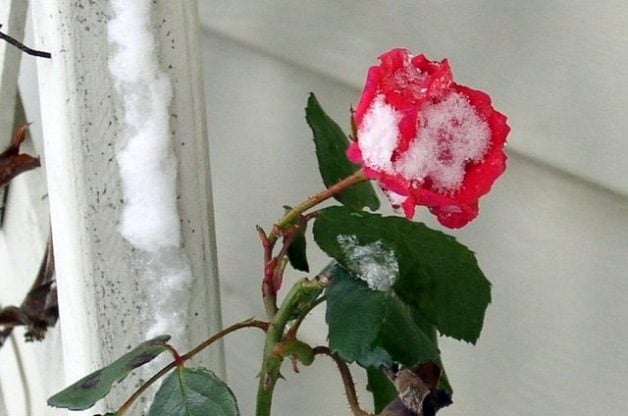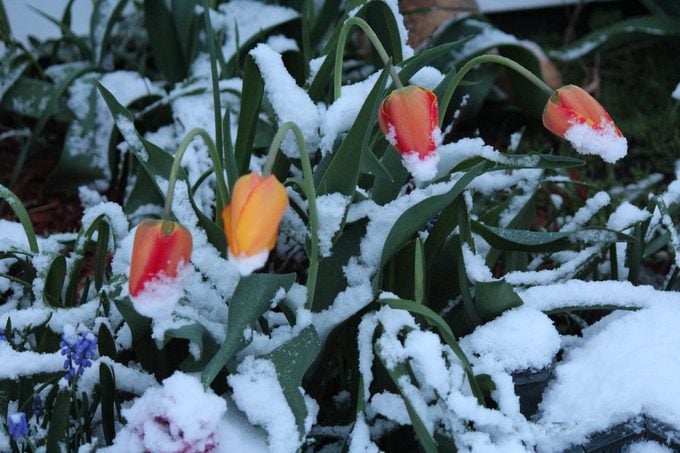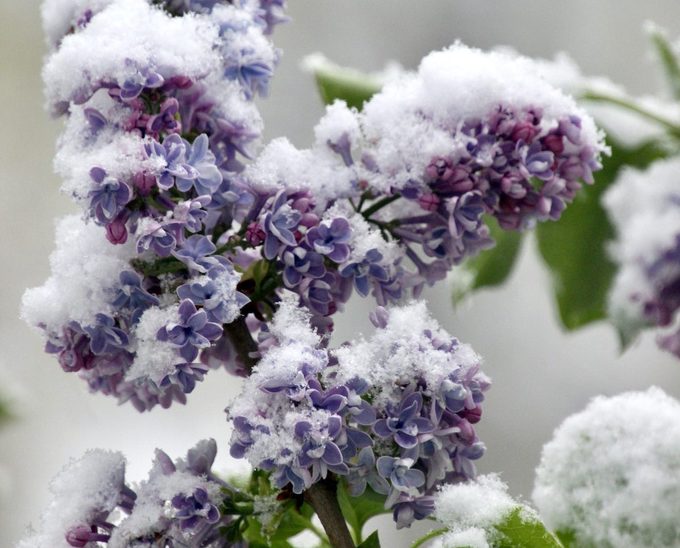Winter Dormancy and Chilling for Plants
Updated: Sep. 26, 2023
Shivering in the cold after the warm summer and fall? Be thankful for cold weather that evokes winter dormancy and chilling for your plants.
Do Plants Need Winter Chilling?

In most places, temperatures are dropping and while you might be shivering, your garden is actually thankful. Some of your favorite plants need winter dormancy and chilling in order to bloom when spring arrives. Find out which plants require a long cold spell to put on a spectacular blooming show next growing season.
Learn how to find the first and last frost dates.
Why Do Plants Go Dormant?
Dormancy is basically the time when a plant stops active growth. It’s a way for plants to defend themselves against harsh conditions like snow and ice, but the process of dormancy begins long before winter starts.
In the late summer, as days begin to grow shorter, plants begin preparing for winter dormancy. They slow down their growth, sometimes setting buds for the following spring, and shed their leaves or die back to the root. By the time cold weather arrives, the plant has shut down and is ready to wait out the rough weather ahead.
Learn how to prune roses for winter.
When Do Plants Come Out of Dormancy?

As it turns out, though, that rough weather is absolutely necessary. Many plants, including popular spring blooming bulbs such as tulips, require a period of chilling to break the dormant stage. In other words, they need a certain number of hours of temperatures between 32 and 45 degrees F. Once the plant has experienced its necessary amount of chilling time, it will be ready to resume growth and spring flowering (known as vernalization) when the weather warms up again for good, rather than becoming active too soon due to an unexpected warm snap in January.
For instance, most apple varieties require 1,000 chill hours on average, so warm days in December before they’ve had this chilling won’t usually cause them to start flowering.
Grow flowers in winter by forcing bulbs indoors.
Can You Grow Lilacs in Florida?

Not all plants need dormancy and chilling, but for those that do, it explains their inability to grow well in warmer climates. Here in Central Florida, I miss flowering lilacs (Syringa vulgaris) desperately each spring, but it would do me no good to try to grow them. Lilacs require a chilling period each winter in order to flower in the spring, and central Florida just doesn’t get cold enough. Any lilac planted here would most likely put on growth for a year or two, but it wouldn’t flower, and eventually would simply falter and die.
Learn how to make the most of your gardening zone.
So if the weather has turned cold in your part of the country, it’s actually something to be thankful for. When warm temperatures arrive again this spring, proper winter dormancy and chilling ensures you’ll have lilac flowers, apple blossoms, and tulip blooms galore!
Next, how to prepare your garden for winter in two days.
